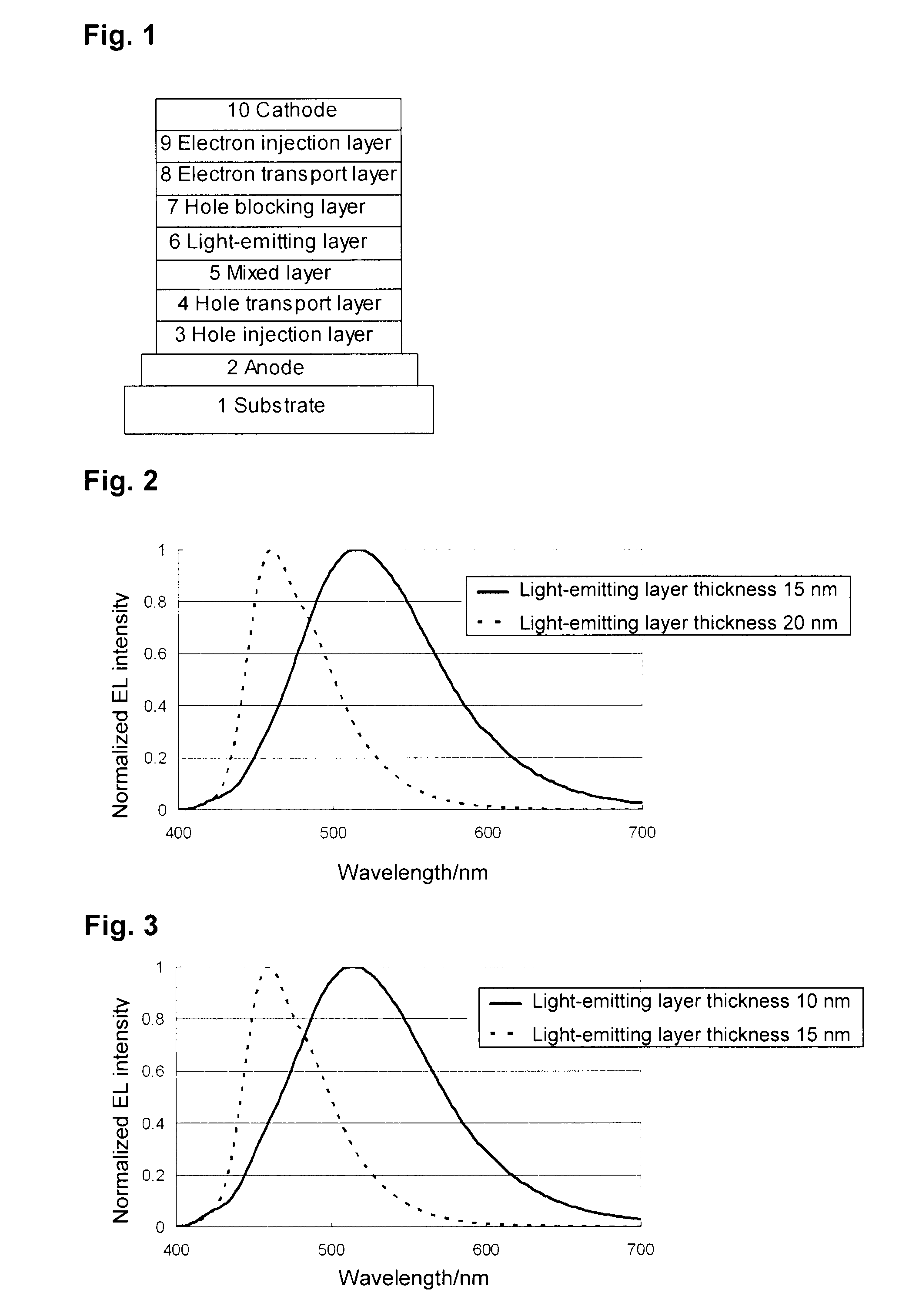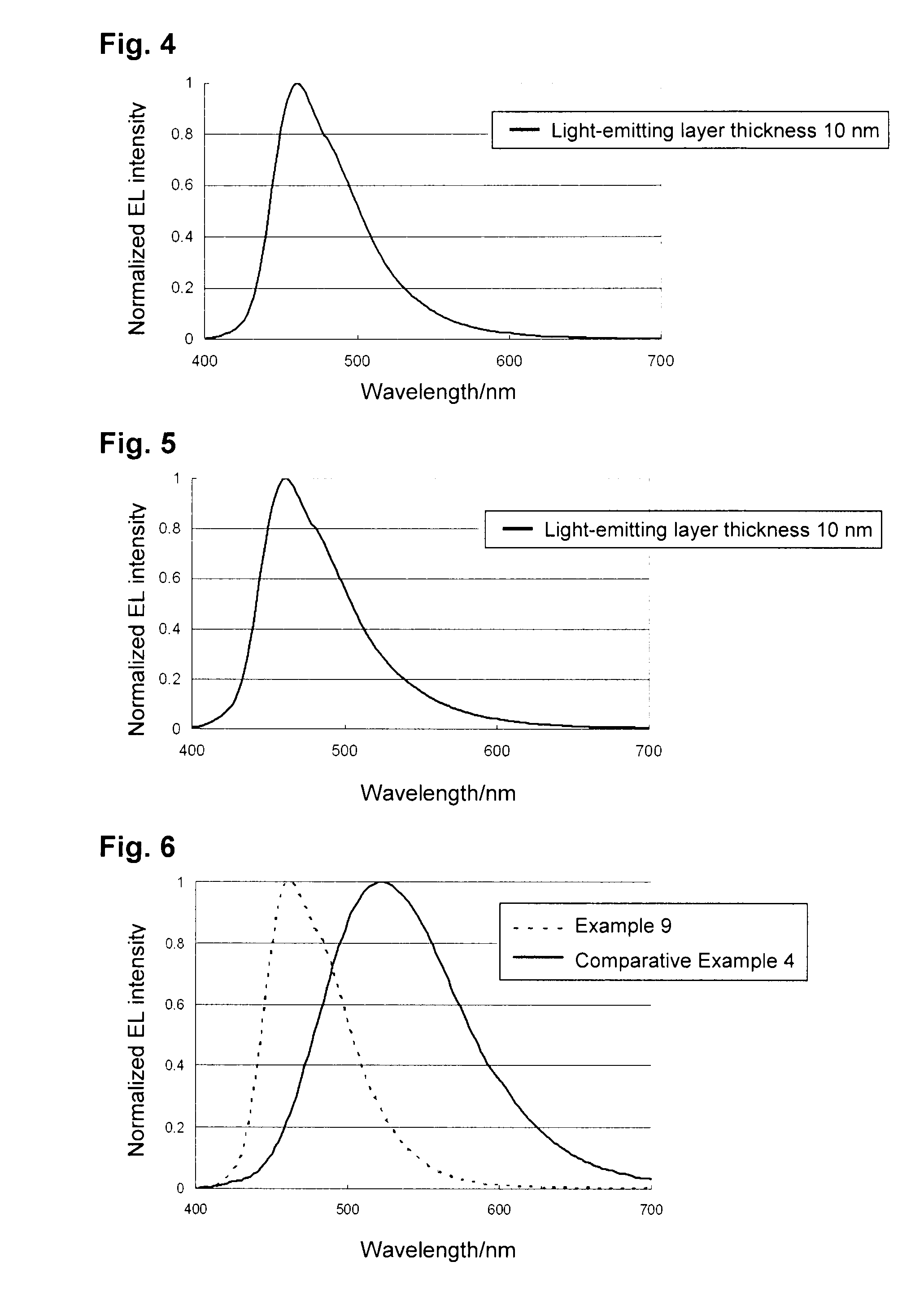Organic electroluminescent element, organic el display device and organic el illuminating device
a technology of electroluminescent elements and display devices, applied in the direction of luminescent compositions, thermoelectric devices, chemistry apparatuses and processes, etc., can solve the problems of increasing driving voltage, low current efficiency or power efficiency, and high driving voltage, and achieve high power efficiency, low driving voltage, and high current efficiency
- Summary
- Abstract
- Description
- Claims
- Application Information
AI Technical Summary
Benefits of technology
Problems solved by technology
Method used
Image
Examples
specific examples
[0212]Now, preferred specific examples of the eliminating polymer in the present invention will be presented, but the present invention is by no means limited thereto.
In the above formulae, n is an optional integer.
[Eliminated Film-Forming Composition]
[0213]An eliminated film is usually formed by using an eliminated film-forming composition.
[0214]In the present invention, the eliminated film-forming composition contains at least one type of the above eliminating polymer. Further, the eliminating polymer contained in the eliminated film-forming composition may contain any one type alone or different two or more types in an optional ratio and combination.
[0215]Ones other than the eliminating polymer contained in the eliminated film-forming composition are the same as those disclosed in the above section for [Cross-linked film-forming composition]. Preferred embodiments are also the same.
[Method for Forming Eliminated Film]
[0216]The method for forming the eliminated film is the same as...
example 1
[0393]An organic electroluminescent element as shown in FIG. 1 was prepared.
[0394]An indium.tin oxide (ITO) transparent conductive film deposited in a thickness of 120 nm on a glass substrate (a sputter-deposited product, manufactured by Sanyo Vacuum Industries Co., Ltd.) was subjected to patterning in stripes with a width of 2 mm by means of a usual photolithography technique and hydrochloric acid etching to form an anode. The patterned ITO substrate was subjected to cleaning in the order of ultrasonic cleaning by an aqueous surfactant solution, water washing by ultrapure water, ultrasonic cleaning by ultrapure water and water washing by ultrapure water, then dried by compressed air and finally subjected to ultraviolet ray ozone cleaning.
[0395]Firstly, a composition for hole injection layer comprising a hole-transporting polymer compound (weight average molecular weight: 26,500, number average molecular weight: 12,000) having a repeating structure represented by the following struc...
example 2
[0405]An organic electroluminescent element was prepared in the same manner as in Example 1 except that in Example 1, a light-emitting layer was formed under such a condition that the film thickness would be 20 nm when the film was formed on a glass plate, a hole blocking layer was formed in a thickness of 5 nm by using the compound (C5) represented by the following structural formula, and an electron transport layer was formed by adjusting the film thickness of Alq3 to 10 nm.
[0406]The results of measurement of the emission spectrum of this element are shown in FIG. 2. It was an organic electroluminescent element having the maximum wavelength at 460 nm.
PUM
| Property | Measurement | Unit |
|---|---|---|
| surface tension | aaaaa | aaaaa |
| surface tension | aaaaa | aaaaa |
| surface tension | aaaaa | aaaaa |
Abstract
Description
Claims
Application Information
 Login to View More
Login to View More - R&D
- Intellectual Property
- Life Sciences
- Materials
- Tech Scout
- Unparalleled Data Quality
- Higher Quality Content
- 60% Fewer Hallucinations
Browse by: Latest US Patents, China's latest patents, Technical Efficacy Thesaurus, Application Domain, Technology Topic, Popular Technical Reports.
© 2025 PatSnap. All rights reserved.Legal|Privacy policy|Modern Slavery Act Transparency Statement|Sitemap|About US| Contact US: help@patsnap.com



